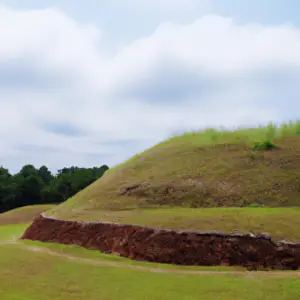Best Famous Monument in Macon-Bibb County | Historical Building in Macon-Bibb County

- By
- Aparna Patel
- |
- 12 May, 2023
- |
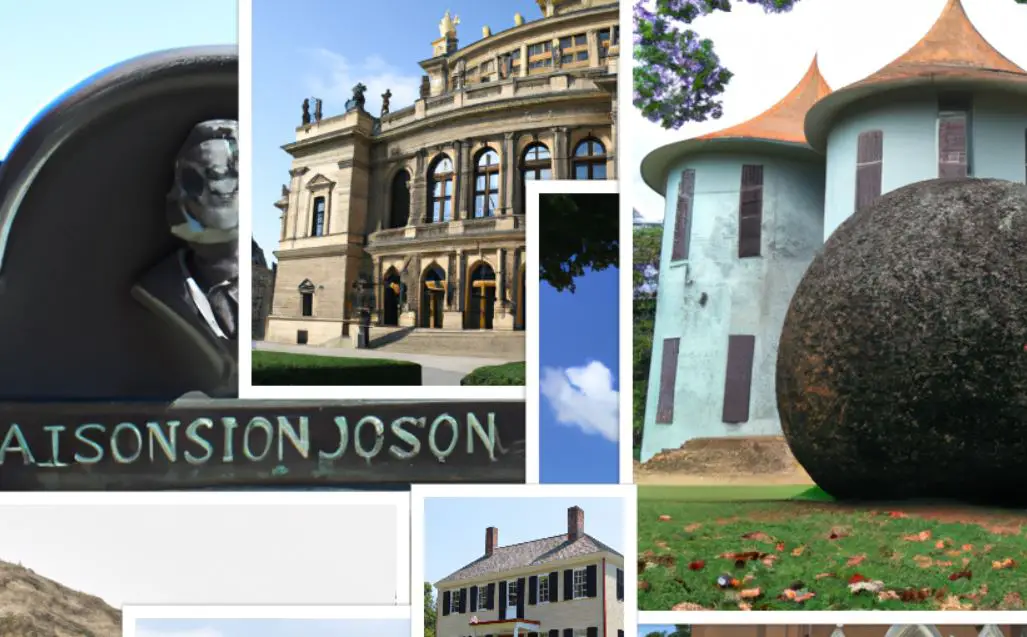
From the world-famous Hay House to the beautiful Linwood Cemetery, Macon-Bibb County’s monuments tell the story of an important part of American history. In this blog post, we’ll explore some of the best and most famous monuments in this southern city.
We’ll cover everything from historical sites to public art installations that capture the culture and history of the area. So, if you’re looking to pay your respects to the past while experiencing the beauty of the present, dive into this incredible tour of Macon-Bibb County’s monuments.
10 Famous Monuments in Macon-Bibb County ,GA To Visit
1. Ocmulgee National Monument
Ocmulgee National Monument is a United States national monument near Macon, Georgia, managed by the National Park Service. The national monument is situated on 701 acres of land from Macon-Bibb County, and is located on the east bank of the Ocmulgee River. Its namesake is the Muscogee Nation, who inhabited this site for thousands of years prior to European contact.
Ocmulgee National Monument provides visitors with an opportunity to explore ancient American Indian history and culture through interpretive trails and exhibits. Visitors can explore an 18,000 year-old archaeological landscape of earthen mounds, a reconstructed ceremonial Earth Lodge, and informative display cases throughout the visitors center.
The monument is open daily from sunrise to sunset, with the exceptions of the Thanksgiving, Christmas, and New Year’s days. The park offers free admission and free activities, such as ranger-led historic walks.
In addition, special activities such as lectures, Living History presentations, cultural demonstrations, movies and more are periodically offered throughout the year. The park also offers a variety of educational programs to help students gain a better understanding of the natural and cultural resources of the park.
2. Sidney Lanier Cottage
Sidney Lanier Cottage is located at 935 High Street in Macon-Bibb County, GA. It is a historic home associated with the poet Sidney Lanier and is the only remaining home in which he ever lived.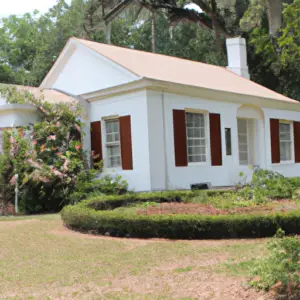
The home was built in 1820 and was declared a National Historic Landmark in 1962. Sidney Lanier Cottage is now owned by the Georgia Historical Society, who opened the house to the public as a museum. Visitors to the museum can learn more about Lanier and tour the home, seeing artifacts and furnishings arranged to reflect its time period. Guided tours of the home are available daily. There is also a gift shop which sells books and souvenirs.
3. The Cannonball House
The Cannonball House, located in Macon-Bibb County, Georgia, is a historic house located on Georgia Avenue in Macon’s Shirley Hills district. The house was built in 1896 and is one of the earliest examples of the Craftsman-style architecture that became popular in the region during the early twentieth century.
The house was heavily damaged by cannon fire during the Union occupation of Macon during the Civil War. The house was restored in 2009 and is now listed on the National Register of Historic Places. The house is now operated as a museum and visitors can tour the grounds and interior of the Cannonball House and learn more about the Civil War and Macon’s rich history.
4. Grand Opera House
The Grand Opera House in Macon-Bibb County, Georgia is one of the oldest historic performing arts venues in the United States of America and is a National Historic Landmark. Initially constructed in 1884, it has been home to countless performances of opera, musicals and classical music over the years to thousands.
The theatre is owned and operated by Mercer University and is considered one of the many great landmarks of the city of Macon. The Grand Opera House is a notable venue for performances in a variety of genres including ballet, and more recently, touring music acts. It continues to be a major part of Macon’s performing arts community and is the home of the Macon Symphony Orchestra.
5. Frank Johnson Memorial Monument
The Frank Johnson Memorial Monument is located in Macon-Bibb County in Georgia. The monument commemorates the legacy of Frank Johnson, who fought for the civil and educational rights of African-Americans in the area.
Johnson was an educator, a principal, a civic leader and a major figure among Macon-Bibb county black civil rights advocates. He was a leader of the movement to desegregate public schools across the region, and he was also instrumental in the founding of Macon-Bibb County’s first African-American library. The monument was dedicated in 2005, and it stands as a reminder of Johnson’s commitment to the civil rights of all members of the Macon-Bibb community.
6. Fort Hawkins
Fort Hawkins, located in Macon-Bibb County in central Georgia, was built in 1806 to serve as the US Army’s outpost in the then southeastern frontier of the United States. Initially made from wood palisades, it was rebuilt in the 1820s and expanded to a hexagonal fortification of brick walls with bastions in 1836.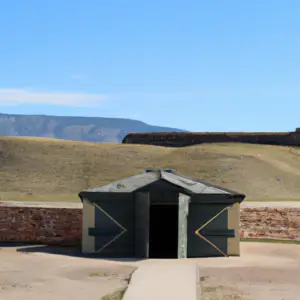
Fort Hawkins became an important depot for troops and weapons, and provided protection for Fort Valley and Macon, which it overlooks. It also served as a frontier market place and major crossroad in the Antebellum period. The fort was decommissioned in 1872, and the property was divided for settlement and sale and remained largely forgotten for much of the twentieth century.
In 2005, Fort Hawkins and its accompanying area was designated as part of the National Register of Historic Places. In 2008, the Fort Hawkins Commission was established to oversee the restoration and preservation of the site, as well as provide educational materials on its history. Since then, the site has undergone extensive renovations and Historic Walking Tours are available for visitors. Fort Hawkins not only serves as an important historic landmark for Macon and the surrounding areas, but also as an educational center, helping to tell the story of Georgia’s past.
7. Forsyth Park Fountain
Forsyth Park is located in the heart of Macon-Bibb County, Georgia, at the corner of Forsyth Street and Milledgeville Road. The park is a popular spot for visitors and locals alike, offering a serene and picturesque landscape in the historic City of Macon.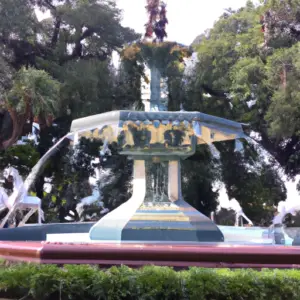
The main feature of Forsyth Park is the iconic fountain in the center of the park. The fountain was built in the late 19th century and originally featured a statue of a Confederate soldier, but the statue has since been removed. The fountain is now lit up at night and is a popular spot for visitors and locals alike. The fountain can also be seen from many of the surrounding streets.
8. St Joseph’s Catholic Church
St. Joseph’s Catholic Church is located in Macon-Bibb County, Georgia. It is a vibrant and active parish that strives to be a place of healing and hope, offering the Catholic community a spiritual sanctuary and a place of faith, fellowship, and hospitality.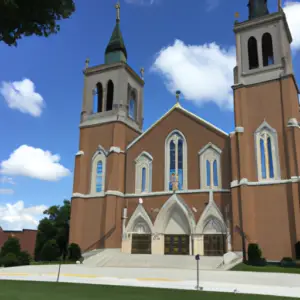
St. Joseph’s stands as a beacon for the Macon community for over 100 years. Under the pastoral ministration of Fr. Edwin Murray and the leadership of its many dedicated lay ministries, St Joseph’s strives to meet the spiritual and social needs of its many parishioners. From its generous ministries that include pastoral care to individuals facing difficulty, to its vibrant weekly masses and special events, and its Christmas and Easter celebrations, this Catholic Church is more than a building: it is a living and vital organism of strength and joy.
At St. Joseph’s, a commitment to the Gospel values is evident through its many ministries: Eucharistic Adoration, weekly Early Adoration, folk, praise and traditional choirs, and RCIA (Rite of Christian Initiation of Adults). In addition, St. Joseph’s offers a number of other activities, including Bible study, book club, occasional retreats and classes, as well as other social, educational, and cultural activities throughout the year.
The generous hospitality of St. Joseph’s extends to all citizens of Macon, regardless of their background or beliefs. St. Joseph’s embraces all God’s children, providing a peaceful and tolerant place of refuge for all who come here.
We welcome you to join us at St. Joseph’s Catholic Church.
9. Hay House
Hay House is one of Macon-Bibb County’s most beloved and iconic landmarks. Located in Macon, Georgia, it is a four-story Greek Revival-style home built in the mid-1800s. It was originally built for Judge Charles Edgar Hay, who owned and operated a nearby cotton mill. In the early 1900s, Hay House was opened to the public as an education center and museum of local history, and today it houses a variety of exhibits and educational programs.
Hay House features guided tours of the historic mansion, offering visitors unique insight into its many artifacts, including an 1861 grand piano, Ulysses S. Grant’s personal trunk, and a wide range of paintings, prints, and other pieces of artwork. Visitors can also explore the impressive gardens, and a gift shop is available to allow guests to take home tangible reminders of their visit. Hay House also celebrates the area’s musical heritage with a popular musical museum and a restored Victorian-era music room where visitors can listen to recorded music from the 1800s and early 1900s, as well as performances by internationally-acclaimed acts.
Hay House is owned and operated by the Georgia Trust for Historic Preservation, which helps maintain the house and its grounds, preserving its history for future generations. It was designated a National Historic Landmark in 1974. Hay House is open every Saturday from 8am-3pm, and admission is free for all visitors. Guided tours are available for a small fee.
10. Tubman Museum
The Tubman Museum in Macon-Bibb County, Georgia is the largest museum in the southeastern United States dedicated to African-American history and culture. The museum is named after the legendary Harriet Tubman, who escaped enslavement in Maryland in 1849 and returned as a conductor to rescue over 300 enslaved families and friends using a network of safe houses.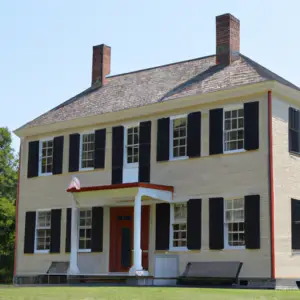
The Tubman Museum, which opened in 1985, preserves and celebrates African-American history and culture not just from the region but from all areas of the globe. The permanent collection includes a variety of items such as African masks and textiles, African-American fine art, folk art, and African-American literature. The museum also features a variety of special exhibitions, lectures, performances, and workshops.
The Tubman Museum also serves as a venue for educational programs and community outreach. Through educational programs and special events, the museum puts a focus on history and culture related to the African diaspora.
Search Posts
Latest posts
-
5 Mar, 2024
Why prohibit engine braking?
-
4 Mar, 2024
Why would you wrap your luggage in plastic?
Popular posts
-
5 Mar, 2024
Why prohibit engine braking?
-
5 Mar, 2024
How to avoid drinking vodka?
